UP TO THE MINUTE
Achieve Growth With Service and Maintenance - PODCAST TRANSCRIPT
July 1, 2025 at 11:00 a.m.Editor's note: The following is the transcript of a live interview with Chris Huettig and John McDermott from KARNAK. You can read the interview below, listen to the podcast or watch the recording.
Intro: Welcome everyone to this month's Coatings Talk from Coatings Coffee Shop. I'm so excited. I'm here with my friends, Chris and John from KARNAK and we're going to be talking about service and maintenance and how to achieve growth within your service and maintenance departments and it's just going to be a great conversation here with KARNAK. So let's dive right in. And Chris, I'll have you introduce yourself and tell us a little bit about you and KARNAK.
Chris Huettig: Thanks, Megan, I appreciate it. Thanks everybody for coming today. We always love to talk about maintenance at KARNAK, that's really at the heart of our business. As you see there, I've been at KARNAK or in the roofing industry for 31 years. I'm in my 27th year at KARNAK know. Besides all the things I've done, really, if somebody asks me what I enjoy the most, it's really helping contractors solve issues. That's what we do at KARNAK. I get a lot of pride and accomplishment out of being able to help contractors expand their maintenance divisions, use our products, solve problems and ultimately make money for their company and have their companies grow. So that's really what I'm most proud of and summarizes how most of us feel at KARNAK as well.
Megan Ellsworth: Yeah, that's great. Absolutely. John, can you tell us a little bit about yourself?
John McDermott: Yeah. And thank you to Coatings Coffee shop for having us on here and thank you everybody for joining us. My name is John McDermott, I'm the vice president of sales at the KARNAK Corporation. I've been with KARNAK 28 years, but a 38-year veteran of the roofing business. And just to expound on what Chris said, at KARNAK, what we do, we fix things and we do take a lot of pride in solving problems. And when we solve a problem with our product or our knowledge of how to do it just helps us develop better relationships with the contractors and obviously provide them with value that they can bring to their owners of fixing the problems.
Megan Ellsworth: Absolutely. KARNAK is so great in that realm of bringing solutions to their customers and partners that they work with. So I'm so glad you both are here to talk with us about service and maintenance. Let's dive right in. So why, John, I'll shoot this to you first, why is roof maintenance growing so much in the coatings industry?
John McDermott: Well commercial roofing in general is growing and that's based on a much higher demand. In this country we've been doing incredible amount of commercial buildings for the last five decades, those roofs that are being put on now do not last as long as roofs that were put on 30, 40, 50 years ago and there's good industry information that sort of proves that. So we have this just higher volume of need for repair, maintenance, restoration and re-roofing in general.
We also think that the owners are much better informed now. There's different avenues like this and other professionals in our business that are promoting maintenance and proving to those owners why it saved them money. So they're more informed. So they're asking for these kind of things instead of us having to go press them on it. And I already mentioned that low slope roofs are not lasting as long, but it's just a much, much higher level of demand.
And there's one other thing right now that's driving that and in 2020 there was a significant amount of work that didn't get done for obvious reasons because of the COVID thing and then when you moved into 2021, then there was a whole supply chain crisis and another whole very large volume of work that didn't get done and that just kept backing up on the work that was coming due in the subsequent years. So there's just a bigger book of business out there and a much bigger need for not just re-roofing, but maintenance in general.
Megan Ellsworth: Yeah.
Chris Huettig: At the end of the day, just to add on to what John said, at the end of the day is that repairs to a roof are not a choice, you have to make repairs and then when you start getting in to see how costly those repairs are, you start thinking about, what can I do to prevent some of these? And that's where the maintenance aspect kind of comes into play as well, I think.
Megan Ellsworth: Yeah. I love that you guys also brought up that owners are more informed and customers and building owners are wanting to get ahead of the curve a little bit more in terms of maintaining their properties and buildings and whatnot and that includes obviously the roof. So Chris, what are some key benefits to adding a maintenance and repair service to a contractor's business?
Chris Huettig: One of the first ones with adding this is really is the exponential growth of their revenue. You're taking a section of the market that maybe you haven't been working in that is going to give you a steady increased revenue stream in your business. Doing maintenance, it gets on the books and you're able to sell maintenance where you're doing something in a way that you're doing it ahead of time, you can schedule it. So you've got the crews, the people. When times are slow, that maintenance kicks over and fills some spots there, so you're really able to, again, generate that revenue stream.
The other thing of adding it and what is so smart is that you're building your customer relations. People who are in sales get that, the more touch points you have with customers, the better the rapport. You feel like they have confidence in you more and they're going to reach out when they have things coming up. So it just helps build some of that long-term growth and that long-term growth is going to benefit you in many different ways. But one of the big ways is that when they do need that roof, when they do have the budget, when things do happen and they need you, you're going to be the first one at the top of the phone list there to call because you've built that confidence and they trust what you do. You know the roof, if you've been doing maintenance on it, you know every inch of that roof, how it was built, how it's put together, what work and service has been done over the year and it's just really something important.
In talking about that maintenance thing and companies that get into it realize how profitable that work is. I mean, if you break down roofing into four key categories, you have your new construction, you have your reroof, maybe a restoration and then the repair and maintenance, repair and maintenance is at the top of the list. I mean, there are companies out there that easily are earning 50 to 70% profit margins on this work. A lot of times you're not using a lot of material, you're not using a lot of people, you're not putting big warranties on stuff. It's really that constant service work that is actually generating some really good revenue for your company.
With that, you're able to upsell some opportunities. If you do regular maintenance, there are things that you're going to see when you're doing it that are above and beyond what the scope of that maintenance visit is that is going to need to be repaired. So you're able to write quotes up for that and generate some punch tickets for some items there that are going to bring in some more revenue for the company.
And really overall, customers want it. Customers want the flexibility of, "If I need a roof, great. If I don't need a roof, tell me that as well and service me by giving me good maintenance until that time comes." So their budgets are all different. Their needs are all different. They may be interested in selling their business and they don't want a full roof, but yet they need some work done or they're a long-term building owner, we're holding onto this and we know we have to have it tuned up every year and we want you to be part of that. So all those things are just really some key benefits of why a contractor would want to add maintenance or if they already are doing it, maybe really enhance it, put a lot of effort to it to grow that part of their business.
Megan Ellsworth: Yeah, no, it's so huge and we're going to get into the how. So we've kind of established the why, why would a roofing contractor want to add this to their business? So next, Chris, what are some of those essential tools and materials that are needed to start a service and maintenance program and get it up off the ground?
Chris Huettig: Well, it's not really hard to start a service. When you look at what you need, I mean, we always refer to it as it's the quickest way for a residential contractor to get into the commercial space is to do maintenance because you don't need a large warehouse to store ten-foot rolls of this and that and all that, but you do have to have some key things about the roofing industry to know.
One of them is safety. Safety is always at the forefront. If you're not used to going on roofs and doing maintenance, you may be getting yourself into some situations where it's hard to get to places, it's very difficult. Or on roofs maybe that you're not familiar with, one may be a little slicker than others or the slope or whatever. Safety is always paramount, so make sure you know what you're doing and you got the right equipment to do it.
The other thing is you need the right tools. When you're going to conduct an inspection, it's not always your eyes you're going to be using. You may need a thermal infrared camera to help locate a leak or if there is a leak, determine how much of that insulation is wet that you're going to have to expand out to rip out and remove and replace. Moisture meters, again, tools there to use in the industry. And obviously once you've found that leak, you're going to need other things too and other tools to do that. Most importantly, you're going to need the repair materials, whether they're membrane and you're going to have to have welders to weld it or glues or in our side with KARNAK, make sure you have the right sealants.
There are a lot of manufacturers that make in our space of sealants and coatings, we have a lot of different products. Some you can use on some roofs and some you can't. So you got to have that education of understanding what those products are, how to use them. Do I use fabric here? Do I not? Have all your scenarios lined up. It doesn't mean you're sitting by the phone waiting for something to happen. Be proactive, have these things lined up ahead of time.
And then at the end of the day, you've got to have a service truck. When you're doing maintenance and repair, you want to have the right tools in the right place and be able to react quickly when building owners need it, whether it's within 24 hours of a call or you're going to do your service trucks. To maximize the use of your service people's time, you've got to have the trucks stocked with all the things you need, so know what the roof is ahead of time, do your homework, ask your questions. Things like that are going to help you really set yourself up for success when you have all those right tools together.
Megan Ellsworth: Yeah. So if there are any residential contractors on here and they're looking at starting a service and maintenance for commercial buildings, could you go into depth on maybe what some of that safety equipment will look like?
Chris Huettig: Safety equipment, I mean, just thinking off the top of my head, harnesses, you may need to... I'm thinking of a steep slope, a metal roof, so if you're in the residential space, you probably have a safety harness. Everyone should have a safety harness anyway. You want to have the proper shoes, a hard hat, glasses, the typical things that you would need. And then obviously access to the roof. If you have a ladder, you need to make sure you know how to use that ladder because you could be going on some pretty high roofs. So make sure it's tall enough that you meet the OSHA requirements for setting up a ladder and that it extends further for what you need for going over the roof edge. Those are probably the most important things right there from a safety standpoint.
Megan Ellsworth: Absolutely. Okay, so what are some of the skills that these contractors should have going into starting their service and maintenance program? And John, I'm going to shoot this over to you.
John McDermott: Sure. Well, if you look at roofing in general and you compare residential and commercial, they're quite different. Commercial roofing is much more technical, not taking anything away from residential roofing, but it's much, much more technical. It's a much, much longer time curve to learn commercial roofing.
And when it comes to the technicians that the contractors have for doing this type of work, they need to have a really good basis of commercial roofing in general, of all the different types of systems. You got to understand how the system goes together in order to understand really how to fix it properly. So that's really important.
I'm going to back up a second. When it comes to selling maintenance to a building owner, there has been quite a trend I've seen and I don't disagree, of contractors going to people that are not roofers. So they're hiring staff for sales that do not have a lot of roofing experience. And they may be calling on the CFO at these building owners and explaining to them why this is going to save them money, they don't have to be a commercial roofing expert, the CFO is not either, they have to be able to explain to them why this is going to save you money.
Now, jumping back to the other side, part of understanding everything with commercial roofing is the ability to identify those common roof issues early on so that we can do this preventatively instead of reacting. And the other thing that we beat to death in our own trainings, we'll talk about it later is proper preparation of surfaces for repairs, getting it clean and getting it prepared properly so that we can have a very successful long-term fix for that owner.
Understanding the repair products and uses, there's so many products out there. We have probably seven or eight repair products of our own and we do extensive training on where and when to use those. Some of them overlap each other and you can use what you prefer, different substrates, but we do a lot of training on that.
And then really effective communication with the owners, you've got to be able to and especially, like I mentioned before, it may be someone that knows nothing about the roof. The roof is up here, it's out of sight, out of mind, effectively communicating with them with pictures before and after. This is what you have, this is what we're going to do. This is pictures of stuff we've done before. This is how we're going to solve this. This is what your expectations should be for this repair and how long it's going to last. And effectively communicating with them about the real condition of the roof and how long they think the roof itself is just going to last and what they should be planning for them for re-roofing or restoration down the road. So all of those things.
Megan Ellsworth: That's really interesting.
Chris Huettig: One thing I would add is don't ever forget the mindset and the skills of that technician, they are a salesperson for your company. So that affected communication is key because they're going to have opportunities not only to explain what they saw, how they fixed it, but also some opportunities probably for some upselling too of things they may have seen while they were up there fixing what the root cause was, there may be some other things that they can discuss with the customer, so they really are a salesperson and an extension of that sales for that company.
Megan Ellsworth: That is so, so true. And it's really interesting what you said, John, about seeking out people outside of the industry. That was really interesting. Have you had a lot of experience with contractors hiring people outside of the industry and training them up themselves?
John McDermott: We've had many of these people in trainings and it's obvious.
Megan Ellsworth: Oh, okay.
John McDermott: Yeah, no, we've had a lot of that. And if you browse LinkedIn, you'll see people on the service and maintenance side all the time and you take a look at their background and there's many of them that did not come from a roofing background. We of course seek them out because we want to teach them all about KARNAK, so yeah. So I think it's become more widespread as opposed to taking somebody from your technician group that is super valuable and putting them into sales, that person can still be in sales because that person still has a lot of touches with the owner, but if you've got someone and you're trying to business development, it may not necessarily be somebody with an extensive roofing background. [inaudible 00:17:42].
Megan Ellsworth: Yeah. That's a really good tidbit, a really good note. I hope people are taking notes because that was really good, especially with labor shortage happening right now and a lot of turmoil with all that. So look outside the industry, you never know. Okay, so I'm going to switch slides here. What manufacturer cooperation is needed to provide the best outcome for the customer when restoring and maintaining a roof? And Chris, I'll leave this to you.
Chris Huettig: Well, I got to lead with KARNAK is the seal of quality. The first thing we're going to say is you got to have access to high quality roofing and repair materials, which we give our life to doing that for the contractor. So that's the first thing, partnering with these manufacturers to ensure that you've got a consistent high quality product so that the work you're doing is going to be beneficial and last.
Training and education are two big items at KARNAK and you see in the industry, we do a lot of that. We want contractors to be able to feel confident in the work they're doing in understanding it, so we put a lot of effort to those. We have a certification program. I think we're going to mention it later on, it's called the KARNAK Qualified Applicator Program. We do that to help contractors understand from soup to nuts what repair and coatings restoration looks like and feels like. So again, they're comfortable with it.
Warranty support and compliance, that may be something that you're not all that everyone is thinking about, but we want to make sure that as a good manufacturer, that if someone is seeking a warranted application that we're helping them. We want to be there from the very beginning to make sure they're comfortable with what the work needs to do, what products they have to do as a job startup, kind of watch over them. So that may be some kind of a halfway point, we're doing an interim inspection or help, whatever you may want to call it, but we want to kind of get them when they're doing the sealing portion of something and then the coating still has to go on and then obviously at the end because we want them to have a good experience. The more they enjoy putting our products down and how easy that goes, not only the product side, but if you want to call it the admin side of the business, we want it to all go well so that they have a good experience and want to use our product before.
Technical support is always big, you may be heavy on this at the very beginning so that the contractor can get all the information they need in order to bid a project or to put a quote together, so there's a lot of support up there, but there's also support, as I said, all the way through, whether it's a warranted project or not, we want to be the people that have the answers to help them do that.
And then lastly, cooperation. To have that good relationship means, with a contractor and vice versa is that contractor can feel confident that, you know what, if they got some new products or ideas, I have such a tight relationship with my sales reps and with the company, when they got things coming along, we're going to share those ideas with them. We constantly will create new products and we'll pull contractors from around the country or wherever something is going to be used, we may throw some product their way and say, "Hey, listen, we're thinking about this, it solves this problem and does this, tell us what you think." So we try to use this as an opportunity to give back and help them feel important to us because they are, all the contracts are important to us, but we get some good feedback from that. And obviously they feel good about using something too, maybe for the first time or being a part of the process to create something for the market.
Megan Ellsworth: Yeah, that's really cool. And having a relationship with your manufacturer like that where they trust you to try something new out for them is so huge because it's just that building that trust both ways where the contractor feels they can go to the manufacturer with any problem they have and also the manufacturer can go to the contractor and ask for constructive criticism, what have you. So that's just such a great relationship to cultivate and maintain as well. I love that.
Chris Huettig: It's fun, we learn a lot... And John can say this too, when we do our trainings, one of the first things I always say is, we're here to tell you about our product and what it does, but I want to hear your feedback as well, because I always leave a training and I learn something. Maybe something I thought it wasn't correct and I get corrected, I'm okay with that. They're the ones who are on the roof every day, they know more than I do. We learn some things about our products or things we need in our product line from those conversations. So having that feedback and cooperation is wonderful.
Megan Ellsworth: Yeah, absolutely. I just want to put out there, if anyone has any questions, comments, please feel free to throw them in the Q&A box or in the chat. Chris and John and myself are more than happy to start taking questions whenever you have them. So we kind of touched on this a little bit, but what would you say is the most effective way to sell maintenance and repair services to building owners, John?
John McDermott: Sure, sure. Well, we do have to position it as proactive versus reactive and not scare taxes necessarily, but making sure the owners understand what happens when you don't maintain your roof. And we can do that... Cost is really the number one part of this. It costs less to proactively maintain your roof, but talking with that building owner, "My roof's been on for three years, we've never had a leak. Why am I going to pay you now when I don't have any problems yet?" You have to be able to prove to them.
So we would do that through using what I like to refer to as proof sources or references. And there's been several that have been built. The Roofing Alliance for Progress has done two studies that effectively show that it costs less to proactively maintain your roofs, commercial roofs versus reactive. And there's two studies from them and then there's one for the United States Postal Service that was pretty well done as well.
Megan Ellsworth: Wow.
John McDermott: And those are just three resources. I think Chris is going to get into this later, but what I think a contractor can really use is one of their own references, some commercial building that has or commercial owner that has multiple buildings and they've been under the Preventative Maintenance program and it's cost them X amount these years versus what it used to cost them in doing reactive repairs, etc. If the roofing contractor can build their own case studies like that and have their own references, I think that'll be as effective or maybe more effective than the third party research that's been done. And-3]
Megan Ellsworth: That's a good idea.
John McDermott: So just long-term cost savings is what we have to inform them of and really showing the return on investment compared to full roof replacement. And this doesn't even count what we might do 14 years down the road if we restore that roof and then we get... If we restore that roof instead of that roof lasting 21 years, maybe that roof lasts 29, 30 or 34 years and our life cycle cost of that roof changes dramatically if we can do that. So this is just about being prevented maintenance at this point.
And I wanted to jump back to one thing Chris was talking about and I meant to jump in there. The benefit to the roofing contractor, let's face it, roofing is very risky. It's dangerous, there's a lot of things that can go wrong on a project. It's very dangerous. Preventative maintenance or selling service and maintenance is probably the least of the risk of all the different types of roofing you might do. Tearing off a roof, working on a six-story new construction, all those different things, the fall arrest systems and the risk of falling and all that kind of stuff, repair and maintenance is far less risky and more profitable.
Megan Ellsworth: Yeah. So how would you say when a contractor is trying to inform, I keep saying homeowner, a building owner on their service and maintenance program, how often... What do some of these programs look like that they're selling? Does it kind of vary roof to roof and how often are they checking out these customer's roofs? Is it yearly every other year? What does that kind of look like or does it just change and vary?
John McDermott: Chris, do you want to take it? I mean, we both know-
Chris Huettig: Yeah, yeah.
John McDermott: Go ahead, Chris.
Chris Huettig: Most proactive roof programs are going to have at least two annual inspections. Usually in the spring. It's when you've come out of the winter, you've had a hard winter and you want to make sure everything's buttoned up because usually most of the country in the springtime, you're going to get rain. So you want to make sure it's tight and everything's good there. And then going in the fall, just before the winter, make sure everything is tight again, all sealed up so that when the winter comes.
Outside of that, if you've got any large weather events, if you've had tornadoes close by, hailstorms, weather events, straight line wind issues, things like that, always good to get somebody on the roof just because it's going to be able to make everything safer. But generally those programs are going to be twice a year. When a contractor puts those programs together, there's going to be a list of things they're going to do and pretty much the same with all roofs that they're going to be able to put that into. They're going to walk the areas where you're going to have majority of your issues, which are usually around the perimeter and any penetration curb coming through the roof, wherever the roof terminates, those are always the big areas.
So those areas will be walked and looked and they'll have tools and probes to kind of check those things, make sure edge metal and anything on the roof is tight. They'll make sure vents, the doors on any kind of rooftop unit is securely tight, screwed into the roof. I don't know how many times roofs are damaged by those other things on there that get blown off and then they get blown around on a roof. They will take maybe some sealant and reapply some sealant in places above, say a termination bar. Those are areas that typically don't fall under any warranty at all and they're just maintenance items. You can look at areas of the roof maybe that have some dirt accumulation, remove that dirt. Wherever dirt is on a roof, your chances are you're going to start to have vegetation grow shortly thereafter. If you're getting plants growing, they've all got roots. Those roots will find a seam, a hole, something to get into that's going to lead to a roof leak.
So with that, if energy efficiency is important, you want to keep that roof white, it may include a light washing of the roof to kind of get the dirt off. Those are the general things that are going to really, removing debris, those are the general things that each biannual roof walk is going to take care of. Anything above and beyond that really is kind of those add-ons I was talking about, that is an opportunity for a contractor to write that up and create some more service work.
Megan Ellsworth: Okay. Well, we have some good questions coming in, so thanks everyone for getting involved. Liliana asked if we could provide the name of the three sources that you mentioned, John, so I'll get those from you, John and we'll share those with you, Liliana, after the webinar. And then Brandon asked, "How do we limit liability exposure and avoid taking ownership of a pre-existing issue when there is a repair attempt?"
Chris Huettig: Good question.
John McDermott: Yeah, that's a good one.
Chris Huettig: You've got some thoughts, John, you want to go?
John McDermott: Yeah. Well, the reality is there are many, many repair and maintenance departments that don't necessarily warrant the repair work. So you've got a leak, we fix it, it leaks in that general area again six months later, it's not necessarily a warranty on that because there's all these circumstances that led up to that and what you really have to do, you have to really assess their entire roof for them, get them on a preventative program and identify all these things that could be a problem. You don't necessarily have to have a warranty on your repair work. That's not something that has to happen. Some contractors do, some contractors absolutely do not. So you've just got to be careful and you've got to evaluate that roof. Chris talked about moisture detection and all that kind of stuff. Sometimes those are the underlying causes of continuing leaks in a general area because the roof is wet and it just continues to cause problems in that general area. Maybe not exactly where you made that initial repair but close by. So that's a difficult question, but a legitimate question.
Chris Huettig: I would add to that of just doing a very good job in detailing what you see on the roof with photos, putting good reports together, those reports are going to stand as the backbone of, here's what I saw today while on the roof when you're working and then also with your contracts and anything you're sending on the maintenance side, you want to make sure and I'm not a lawyer, but you have all the right caveats and the right language put in there. Fortunately, there are a lot of people in this business already. You could probably find some service contracts online from others I've seen. Pull those off, find some ideas, put it in your own words, add what you want to, take away what you want to. But it's good to have kind of that document already laid out ahead of time when you're starting a service plan to protect yourself, that's very important.
Megan Ellsworth: Absolutely. And just a absolute shameless plug, if you're a member of the R-Club, which is a part of the coffee shops, you get discounted consultation time with Trent Cotney from Adams & Reese. He's a great lawyer. So if you're needing to put together some sort of contract for your service and maintenance department, I'd highly recommend reaching out to him.
Okay. So Chris, when selling these repair and maintenance programs, how can contractors educate their customers on what they're doing and why this is so important.
Chris Huettig: Yeah, educating customers on maintenance. One of the things I always and I've told contractors before is that you, me, all of us in this roofing world, we know a lot ahead of time. These building owners don't, you got to hold their hand. I think at the very beginning, I mean, it sounds very basic, but even going back to stating what is a roof and explaining that to them about the decking, the insulation, the cover board, the roofing materials, adhesives, mechanically attached, all those things answer that question. Maybe talk about how much a roof costs, again, they don't have an understanding of what that means. So you don't have to be very specific, but just give a wide range of what a roof costs so they've got some idea of what maintenance is versus if I have to put a new roof on.
What happens when roofs leak? I mean, again, it sounds very simple. The building owner says, "Well, I get water on my floor." That's their answer. They don't realize that roof could be leaking for three months before then, now it's saturating the insulation and now that the insulation can't hold any more water, that's why the water's coming in. So they think it's just one little pinpoint, it's on the floor, it's right there. Educate them on these things. It's not to make them feel stupid to help them understand the importance of maintenance and what you're doing and the services you're providing really are saving them money, because they really don't understand how long roofs last and how they're put together. So I think that's always good.
Going on now with other challenges, is really getting them to understand the benefit of the proactive maintenance versus the reactive. Telling a building owner that the number one cause of roof failures is improper installation would probably surprise them, but that really is what we face today in the world. There's a lot of good materials out there. It's how it's all put together and the conditions in which they're put together is really the failure. So knowing that and then to compound that with a lack of any maintenance program, you're just asking for trouble. So that proactive maintenance kind of helps ease that issue that may or may not be present on a roof to give them a better feeling and help convince them.
So many times they may say, "Well, I'll have you do my maintenance," but then let's just say some kind of a wind event happens and there's an issue with the roof and now they decide, "You know what? I'm going to send this out to three or four different people." Some of those people are going to be the quick fix people. They're going to be somebody who's not going to really help them. Having a maintenance person who's been on this roof for X amount of years, who's on it twice a year, really understands it, is going to be able to help. Those are things that actually help with that and help extend that roof and make it last longer.
Other things, case studies. John mentioned it before, the before and after photos, here's what happens or here's what something minor looks like and then here's what... That was just the tip of the iceberg, here's what happened inside. Roof leaks can cause a lot of bad things to happen in a roof. Ultimately, a roof collapse, total catastrophic failure. And that doesn't happen all the time, but it does. And that can hurt people. That can hurt machinery, hurt equipment. So all that is important and you want to make sure you're able to do that and help them there.
And then warranty compliance. Building owners, a lot of times we'll get a roof and they hear warranty and they think it's an insurance policy and it's not. If they read a warranty, there's things they have to do to, they have skin in the game, there's things they have to do to participate in the protection of the roof and the longevity of that roof system. So one of the things is maintenance, bi-annual maintenance, two annual inspections is required by the manufacturer in every roof warranty I know and see, so they have to do that. And a lot of times they don't realize that. So they need to be told that, they need to be shown that. And the reason is because manufacturers know that's how important it is and that's how it's going to make that roof last and the building owners get the most return on their investment. The roof is pretty expensive, so they want to keep it as long as possible and keep it performing well.
Megan Ellsworth: Right, absolutely. Are there any other challenges that you've seen contractors come across when putting together a service and maintenance program or any repairs out there? Common challenges?
John McDermott: Well, creating a dedicated staff to it and keeping them busy at the beginning. You've got to have a pretty good plan. Every roofing contractor does repairs at some point, but only certain ones have a dedicated department and they want to do it, everybody wants to do it, I think. And we have, Chris and I do training all over the country and everybody wants to be in service and maintenance and not everybody dedicates themselves to it, but just having a very good plan on how we're going to start this. We're going to start with one truck and two people. We're going to start with two trucks. How much business do we actually have? Can we keep... Because you want that department to be on its own, it'd be its own profit source, etc. And something you can rely on. You don't want to put those people back on the production crew and then all of a sudden you're not going out and selling preventative maintenance anymore, you just got busy on the production crew and you can't manage both of them. So that's one of the challenges. I think the starting point. Chris?
Megan Ellsworth: Yeah.
Chris Huettig: Having those internal people to not only provide marketing and outreach and promotions on maintenance, but also the simple, just the billing processes. You fix something, you want to bill for it very quickly. The longer that time lags, the building owner forgets about when they needed you so bad, it's sunny outside and my roof's not leaking, you'll be slower paying. So you want to make sure you follow through with all that.
Megan Ellsworth: Right. Yeah, that's great advice. So when we were doing our practice for this, I got onto the KARNAK website and was looking at KARNAK University and what a great program that is. I'm going to start taking it and taking all the courses. Can you tell us a little bit about KARNAK University and some of your other training programs that you all have?
John McDermott: Sure. I'll start with KU. Chris Huettig and I developed this at his kitchen table in 2019 or 2020. That's a true story.
Chris Huettig: It's true.
Megan Ellsworth: I love it.
John McDermott: We wanted it to be basically four sections of four courses each, kind of like a freshman through senior year. And we wanted it to cover everything basic in getting started in repair, maintenance, restoration and a little bit of a commercial for KARNAK. It wasn't designed to be a KARNAK commercial. In the end, it is because people find it valuable, but it's a great starting point. We have entire contracting companies that have been through this. We have entire distribution partners, every person in their company has had to go through it. There's approximately 1,200 that are enrolled now and I can't remember how many graduates.
So 16 courses, that are 5 to 12 minutes each. You listen to Chris Huettig and you take a little test at the end of each module and once you get through number 16, we're notified and we send you a KARNAK certified Restoration Advisor Certificate, KCRA and a drinking cup with the KARNAK University logo on it and then you're a graduate. So it's been fun. It's been very useful for a lot of people and it's just one of those things that people can do at their own time and we can reach so many more of our clientele than having to do this kind of stuff all in person. So that was the idea behind it and it's been very good.
Megan Ellsworth: I love it.
John McDermott: Other things, we have a great YouTube channel where Chris is the star. I think we have approximately 30 different little short segment videos on there, training people how to use a certain product and then of course the Coatings Coffee Shop, there's plenty there from a learning perspective. And then I'll let Chris talk about RCMA and our qualified applicator program.
Chris Huettig: Yeah, I'm past president of RCMA, still actively involved in RCMA. What a great organization, dedicated roof coating manufacturers who care about the industry. RCMA does have a virtual training program, which is a wonderful thing for contractors who aren't into coatings, maybe to get some industry information that's not going to be about... From any manufacturer, we all put our time and efforts together and putting that, it's basics of understanding coatings, what kind of coating chemistries are out there and such like that. So if you're interested in that, you can always go to the RCMA's website, roofcoatings.org to find some information on that and that's a wonderful thing.
Megan Ellsworth: That's awesome. So question about KARNAK University. That's just open to the public, right? Free, anybody can take it.
John McDermott: Yes. Yep.
Megan Ellsworth: Amazing. Amazing. And absolutely Coatings Coffee Shop, everyone go check out the KARNAK directory on Coatings Coffee Shop. You can see all their other RLWs, they've done lunch and learns, coffee conversations, all sorts of stuff, podcasts, articles, KARNAK does so much to help bring information to the industry and inform people on their products and also just the coatings industry as a whole. So thank you KARNAK for sponsoring this episode of Coatings Talk. And everyone also can go to, let's see, all of our other Coatings Talks on Coatings 101 all sorts of different topics on Coatings Coffee Shop as well. I want to open it up for questions. So if anyone has questions for Chris and John, now is your time. And before we get there, Chris, John, anything else? Maybe just one little nugget of advice to contractors listening to this that want to start a service and maintenance program. And Chris, I'm going to pick on you first.
Chris Huettig: Oh, I'm first, okay. If I had to say one phrase, put a lot of passion to it. Leaks and maintenance are unfortunate times for building owners that they don't like. You're not going to see them at their best, put them at ease. Be friendly, don't be confrontational, be helpful and care about what you do. If you care as much about growing a maintenance department, that building owner's going to see that and they're going to feel good doing business with you.
Megan Ellsworth: Totally. Absolutely. Well said. And I put you on the spot. So good job, John, the last little bit of wisdom for people to take away.
John McDermott: Yeah, I would say just call KARNAK first. Everything we did here, I'm a little bit biased, I've been there 28 years. Everything we talked about today, we can get much, much more detailed on for roofing contractors when there's more time. What we didn't talk about was the Qualified Applicator program, which is a very detailed training program where you become authorized to do our systems, but in that it's a very technical training and it also has an entire component on selling preventative maintenance to the owner. So we can do that and the whole KQA, we can just do the selling portion for people. We have it broken up into segments, so don't be shy. Contact KARNAK. We love to provide education, our resources for education or are endorsed by Sarah Jane, the owner of our company. She will allow us to do anything we want when it comes to providing education for contractors. And so it's been really, really good for us and I think it's very valuable information for the contractors. So don't be shy, contact KARNAK and we will help you.
Megan Ellsworth: Love it. Yeah, Sarah Jane is amazing. Okay, we have two questions that just came in. This one's kind of interesting, what would you say is the next generation of restoration systems?
John McDermott: Well, the next generation, there's so many generations already here. Let me talk about a few of the chemistries. We have the old asphalt products or the conventional asphalt products, we have silicone products, there's urethane products, there's thermoplastic rubber, et cetera. It's really the market for what needs to be restored that'll dictate what the next products are, so to speak. We've spent quite a lot of time and I hope this is answering the question in developing very specific systems for single ply because single ply has been anywhere from 65 to 85% of the entire low-slope roofing market over the last decade, so it's huge. But the restorations that are going on, it's probably third next to metal and modified. So even though it's a giant part of the market, it's not a giant part of the restoration market yet, but they're all coming due. So we've spent an awful lot of research and development time and we very specific base coats and finished coats specifically for the different single-ply membranes, acrylics and silicones is what we're utilizing in most of those situations. I hope I answered the question.
Chris Huettig: To add to that, I think what we see in the next generation are really improved processes and tools to take our products and to be able to make the repairs. We see today, the roofs aren't really changing so much right now. We see what's out there and some are growing more of the market share, but those roofs have been around for decades so we know what needs to fix them. It's just the processes and really scaling that up to do it fast and effectively I think is something that we're going to see in the future.
Megan Ellsworth: Yeah, well said you guys. We have a note here from Austin Patterson. He says, "Austin Patterson here. I'm part of the KARNAK sales rep group in the Carolinas. Just wanted to say, well done everyone, great job." So thank you, Austin.
Chris Huettig: Thank you, Austin
John McDermott: Thanks.
Megan Ellsworth: Okay, well, I don't see any other questions from our audience, but if you do have questions, we will absolutely put you in contact with Chris and John and do go to the KARNAK directory on Coatings Coffee Shop. You can learn more there. You can find their website there, KARNAK University there. Everything that you need to answer any of your questions will be there as well. So thank you all for joining us on this wonderful Coatings Talk today. And a big thank you to KARNAK, to you, Chris and John for sharing your wisdom.
John McDermott: You're welcome.
Chris Huettig: Thanks, Megan.
Megan Ellsworth: Absolutely. Yay.
John McDermott: Thank you, Megan.
Chris Huettig: Thanks to Coatings Coffee Shop for having us.
Megan Ellsworth: Yay. Amazing. Oh, we actually have one final chat. Will we get a copy of this webinar? Yes. This will be on demand on the website within 24 to 48 hours. So go to Coatings Coffee Shop to the Coatings Talk navigation and you'll be able to find this. Zoom will also send you a link to the website to find the recording there as well. So keep a lookout, it'll definitely be up by Friday. And thank you again everyone and we'll see you next month on the next Coatings Talk.
John McDermott: Thank you.
Chris Huettig: [inaudible 00:49:42].
Outro: Thank you.





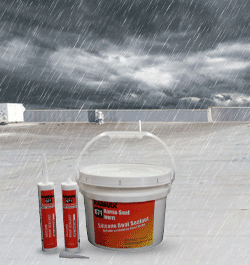


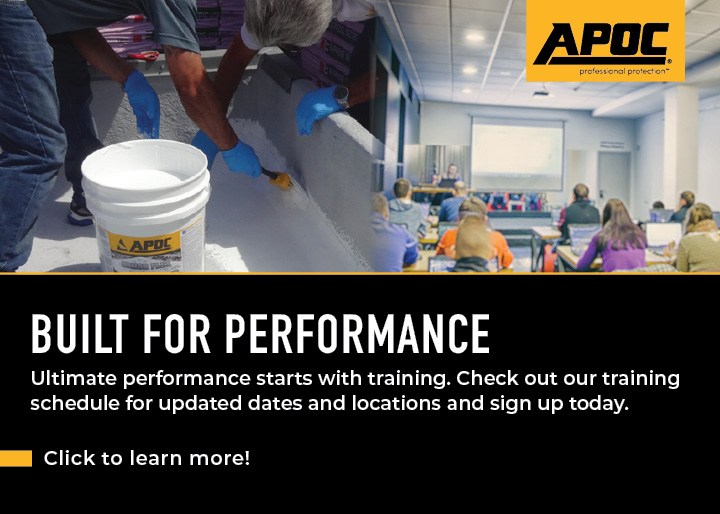


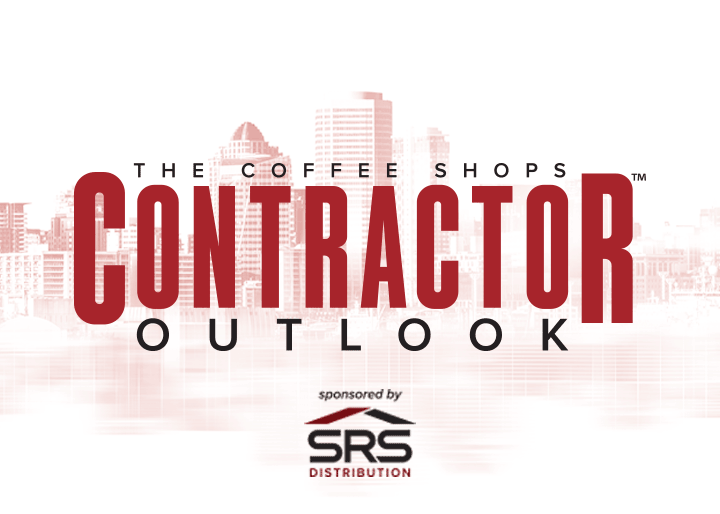

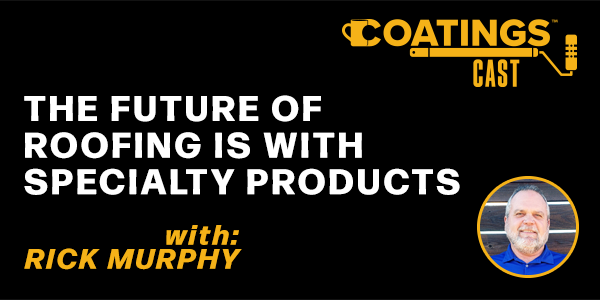

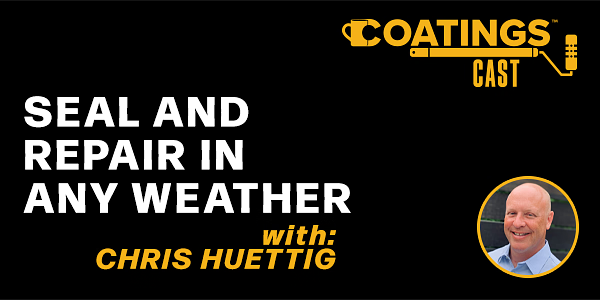




Comments
Leave a Reply
Have an account? Login to leave a comment!
Sign In